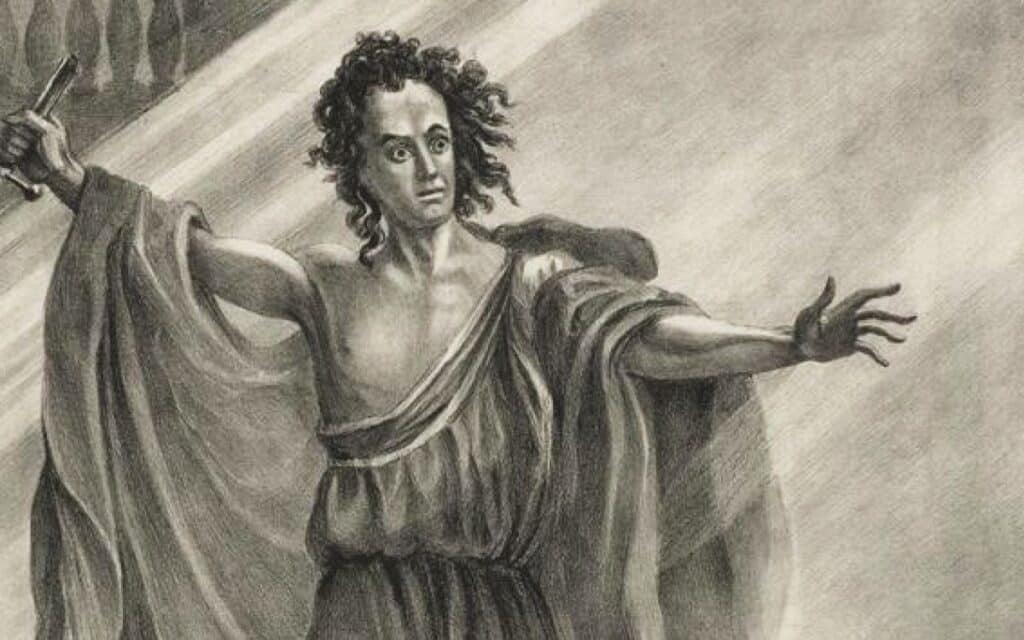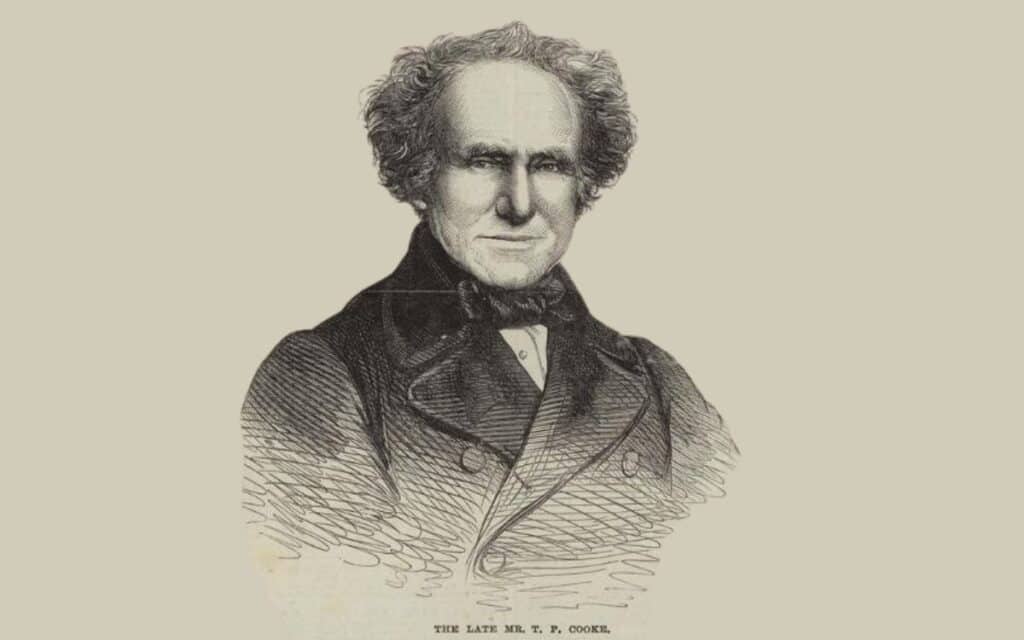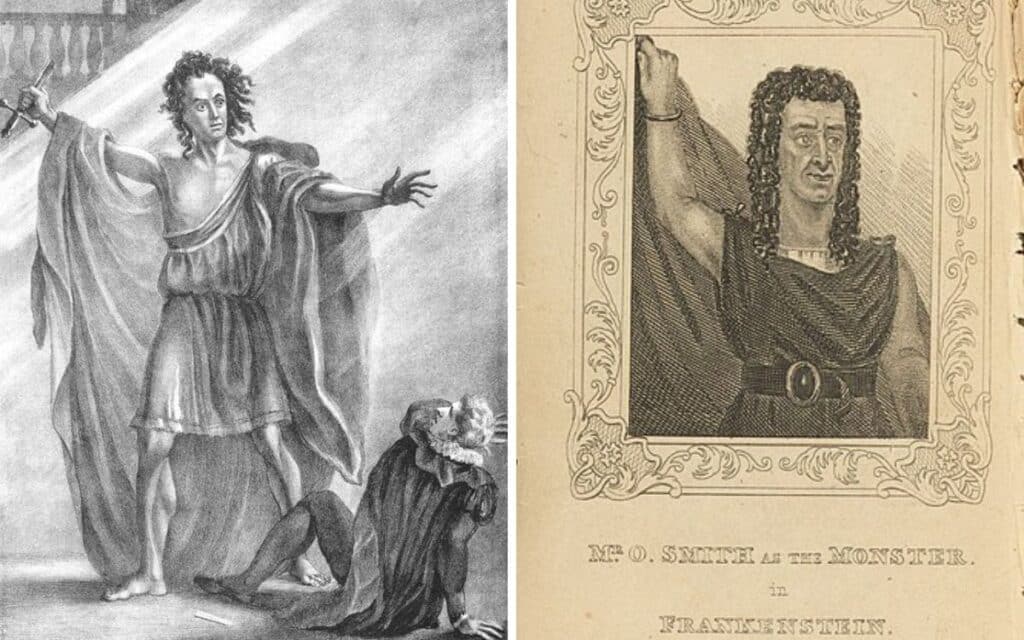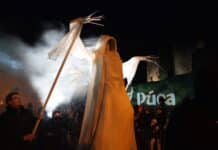Long before the age of cinema, T.P. Cooke and O. Smith brought gothic monsters to life on stage, paving the way for horror’s iconic roles, writes DAVID TURNBULL

Think of actors playing vampires and monsters drawn from gothic novels and you will probably think of Christopher Lee and Boris Karloff in the classic Hammer Studios and Universal Pictures movies.
But the first actors to play such roles took to the stage almost a century before cinema was invented.
Who was T.P. Cooke?
Thomas Potter Cooke, who went by the stage name T.P. Cooke, was born in London’s Marylebone area on 23 April 1786.
He was the son of a surgeon who died when Thomas was only six years old.
As a young sailor he narrowly escaped drowning at the Battle of Cape St Vincent on Valentine’s Day 1797 during the Anglo Spanish war, when HMS Raven, the ship he was serving on, was sunk.

One of his first dramatic roles was a nautical one, playing the Lord Nelson at Philip Astley’s Equestrian Amphitheatre which was located where St Thomas’s Hospital now stand on the South side of Westminster Bridge.
After a stint as stage manager at the Royal Surrey Theatre he appeared in 1820 at the Lyceum Theatre as the vampiric Lord Ruthven in The Vampyr, or Lord of the Isles. The play was written by James Planche.
It was an adaptation of the French play Le Vampire by Charles Nodier, a dramatization of John Polidori’s short story The Vampyr, which itself was written at the same Lake Geneva chateaux where Mary Shelley wrote Frankenstein.
The play pioneered the use of the trap door as a stage prop, allowing Cooke’s imposing vampiric form to disappear in full view of the audience.
The Vampyr was received to great public acclaim leading to him being cast in another gothic melodrama, The Witch of Derncleugh, based on the Walter Scott novel, Guy Mannering.
In 1823, again at the Lyceum, Cooke appeared in as the monster in Presumption: or The Fate of Frankenstein, Richard Brinsley Peak’s theatrical adaptation of Mary Shelley’s novel.
This was the first time the monster created by Victor Frankenstein was brought to life from the pages of the novel.
Shelley herself was amongst the audiences who attended performances.
She felt Cooke delivered an excellent portrayal of the creature she had created and said in a letter to a literary friend – ‘I was much amused, & it appeared to excite a breathless eagerness in the audience.’
The play introduced a character which would become a standard in later movie versions. That of Doctor Frankenstein’s assistant, who was called Fritz in this version rather than Igor, the named coined when Bela Lugosi first played the role on the big screen.
It also featured a number of pioneering special effects, including an onstage avalanche at its climax.
Cooke appeared as the monster in 37 performances at the Lyceum and went on to play the role on many other occasions in reruns and revivals which took place right up until 1850.
The monster character would not be given the name Frankenstein’s Monster until the phrase was coined by Peggy Webley in her 1920s play which became the basis for the 1931 Universal movie.
In the programmes for Presumption the character was always described as… played by Mr T.P. Cooke.
Three years after Presumption’s debut at the Lyceum a second Frankenstein stage play was performed at the Royal Coburg (now The Old Vic) on the other side of Waterloo Bridge.
Frankenstein: The Man and the Monster (1826) was written by H.M. Milner and was considered the pinnacle of his career.

The monster on this occasion was played by Richard John Smith under his stage name O. Smith.
Who was O. Smith?
Born in Yorkshire, O. Smith he was the son of an Irish actor who almost died on stage when he was accidentally run through with a sword during a performance on stage.
Smith had cornered a little market for himself playing supernatural roles in various melodramas.
He later complained, much in the same way as Bela Lugosi would a century later, that he felt he had become typecast: “For the last five years of my life I have played nothing but demons, devils, monsters, and assassins, and this line of business, however amusing it may be to the public or profitable to managers, has proved totally destructive of my peace of mind, detrimental to my interests, and injurious to my health.”
The Man and the Monster featured what would subsequently become the obligatory laboratory scene, where the monster is brought to life with dramatic effect.
In Presumption the scene was played out off stage and only referred to, but in The Man and the Monster it became central to the narrative.
Although Mary Shelley is not known to have attended to Royal Coburg Frankenstein it was just as successful as Presumption and later had a run at the Royal Surrey where T.P. Cook had previously been stage manager.
The Royal Coburg also had its own vampire play. The Three Vampires was billed as a cautionary tale to young ladies not to venture out along at night.
As with Mel Brook’s Young Frankenstein (1974) comedic take on the Universal Pictures’ classics, these early vampire and monster dramas were subject to parody.
Lord Ruthven was the lead character in Gilbert and Sullivan’s 1887 comic operetta Ruddigore; or The Witches Curse, while Cupid on Crutches featured the clown Joseph Grimaldi as Joe Frankenstein who creates and animates a monstrous creature out of vegetables.
Have you seen Frankenstein on the stage? Tell us about it in the comments section below!







